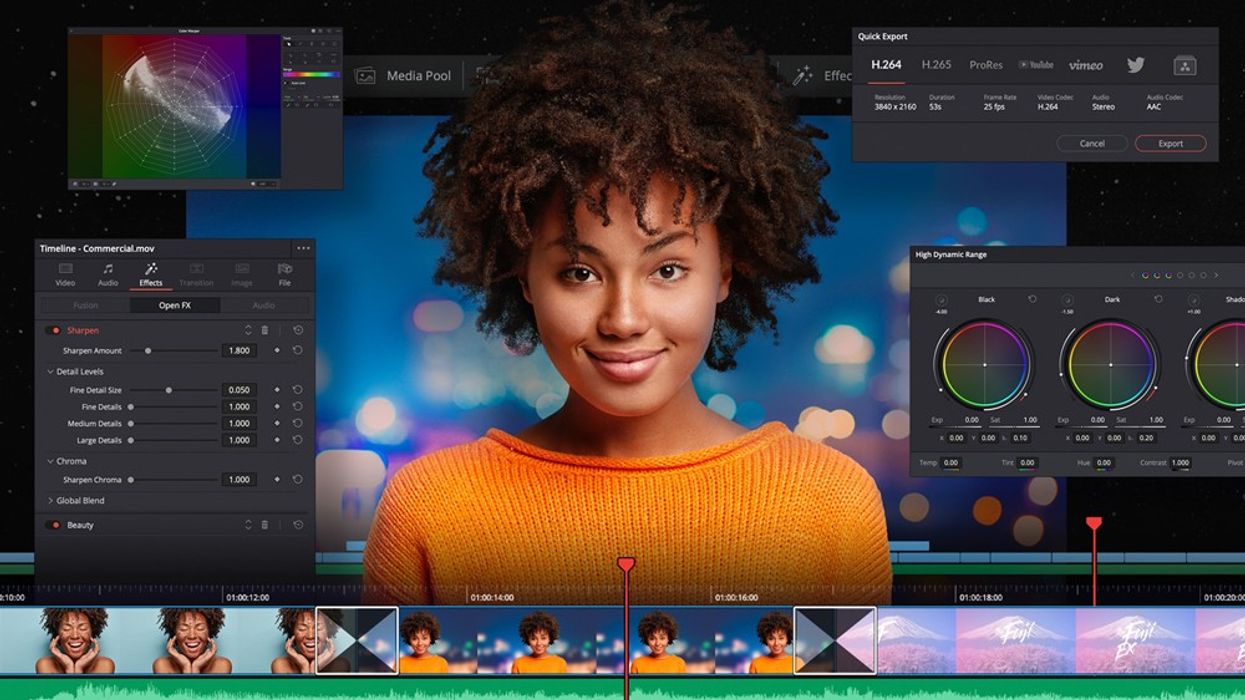DaVinci Resolve 17.1 Adds Apple Silicon Support
Plus, Intel encode and decode support.

Paving the way for DaVinci Resolve users to upgrade to the latest Apple Silicon processors, Blackmagic has released 17.1 of the popular post software. The update will also continue to support Apple’s Intel-based platforms as well on all resolutions. However, if editors and colorists are mastering resolutions beyond UltraHD, they may need to upgrade to DaVinci Studio to do it.
In addition to providing native support for the M1 platform, DaVinci has also boosted support for media files in an unlimited range of resolutions, plus codecs including H.265 with hardware encoding in 4:2:2 and 4:4:4.
Other new features include:
- Support for GPU decoding of RED clips in OpenCL processing mode.
- Option to always perform copy and paste actions on selected color nodes.
- General performance and stability improvements.
Post-production platforms editing and mastering in output resolutions beyond Ultra HD, and starting with 4K, will need to upgrade to DaVinci Studio, rather than the free version. DaVinci Resolve 17 only supports a single processing GPU for Windows and Linux and only 2 GPUs on the current Mac Pro.
You can read our review of DaVinci Resolve Studio 17 or check out our favorite features.
In addition, motion blur effects, temporal and spatial noise reduction, de-interlacing, HDR tools, camera tracker, multiple Resolve FX, 3D stereoscopic tools, remote rendering, an external database server, and collaboration tools will also require the Studio version, as well. Still, if you’re still cutting your teeth on 1080p, the basic version will suffice.
For macOS Catalina, or Windows 10 Creators update, users will need to update their previous databases from version 16.2.8, and Blackmagic recommends that a backup of the existing DiskDB and PostgreSQL database is made before making the move to version 17.1.
The update is available now on the Blackmagic support page.











